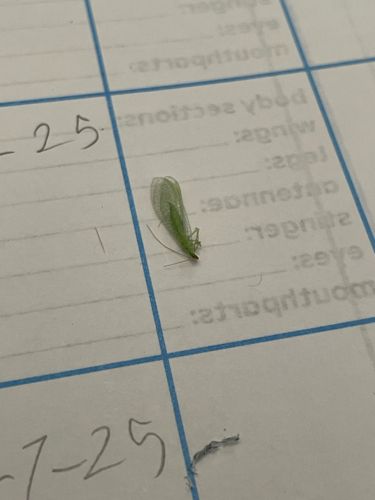Green Lacewing
Scientific Name: Chrysoperla spp. (most likely, given the green color)
Order & Family: Neuroptera, Family Chrysopidae
Size: 10-25 mm (adult body length)

Natural Habitat
Gardens, agricultural fields, meadows, wooded areas; generally found in areas with vegetation and prey.
Diet & Feeding
Adults typically feed on nectar, pollen, and honeydew. Larvae (known as 'aphid lions') are voracious predators of soft-bodied insects, primarily aphids, but also mites, whiteflies, and other small pest insects.
Behavior Patterns
Adults are active flyers, especially at dusk and night, and are often attracted to lights. They lay their eggs on stalks to protect them from crawling predators. Larvae actively hunt for prey. Some species produce unpleasant odors when disturbed.
Risks & Benefits
Benefits: Immense benefit as biological control agents in agriculture and home gardens, as their larvae consume large numbers of plant pests. Risks: No known risks to humans or plants; they are considered beneficial insects.
Identified on: 10/9/2025